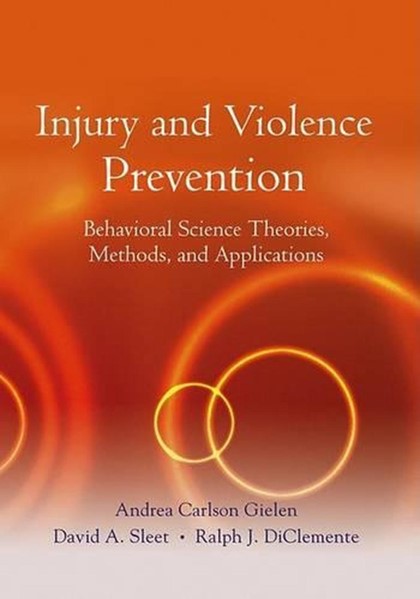BEHAVIORAL & SOCIAL SCIENCE THEORIES & UNINTENTIONAL INJURY

Behavioral and Social Sciences Theories and Models:
are They used in Unintentional Injury Prevention Research?
Behavioral and social sciences theories and models have the potential to enhance efforts to reduce unintentional injuries. The authors reviewed the published literature on behavioral and social science theory applications to unintentional injury problems to enumerate and categorize the ways different theories and models are used in injury prevention research.
Health and safety behaviors contribute to many of today’s public health problems. Mokdad et al. (Mokdad et al., 2004) and McGinnis and Foege (McGinnis and Foege, 1993) demonstrated that health behaviors were responsible for 40–60% of the deaths in the US in 1990.
This issue is particularly important for the problem of injury, which is the leading cause of death for persons aged 1–44 in the US (National Center for Health Statistics, Vital Statistics Systems, 2001).
Using car safety seats (Centers for Disease Control and Prevention, 1991) and having working smoke alarms (National Safe Kids Campaign, 2004) are just two examples of the many health behaviors that have been shown to effectively reduce injuries.
Two Institute of Medicine committees have published literature reviews on social and behavioral risk factors and behavior change interventions for leading causes of morbidity and mortality (Institute of Medicine, 2000, 2001).
Both committees found substantial support for the application of behavioral sciences theory to identify determinants of disease and develop effective interventions, although neither report addressed the use of theory for unintentional injury prevention.
While the breadth of research integrating behavioral and social sciences with injury prevention has grown in recent years, the use of specific behavioral and social sciences theories and models has varied widely, and as the primary basis for research or program design, behavioral and social sciences remain under- represented in the field of unintentional injury prevention.
This may be due, in part, to the historical roots of injury prevention that rely heavily on environmental risk factors and passive interventions or those of health education that were grounded in chronic disease prevention (Gielen and Girasek, 2001; Gielen and Sleet, 2003).
With a few exceptions, these fields remain somewhat segregated, and as students and new professionals in health education have limited exposure to the field of injury prevention and control, so do the up-and-coming injury researchers and practitioners have limited interactions with health education and the behavioral and social sciences.
Theories and models help specialists focus on what is changeable and the most suitable areas or targets for change.
A theory is a set of interrelated concepts, definitions, and propositions that present a systematic view of events or situations by specifying relations among variables, in order to explain and predict the events or situations.
The notion of generality, or broad application, is important. Concepts thought of as the building blocks of theory or the primary elements. A construct is a term used for a key concept in a theory. Finally, a model is a generalized or hypothetical description used to analyze or explain something. (Glanz and Rimer, 1995)
Theories and models can be useful in planning, implementing and evaluating interventions. Theories and models help program planners and researchers go beyond basic unchangeable risk factors (e.g. gender, socioeconomic status) to answer why, what and how people can change their behavior.
Theories [and models] can be used to guide the search for reasons WHY people are or are not following public health and medical advice, or not caring for themselves in healthy ways.
They can help pinpoint WHAT you need to know before developing or organizing an intervention program.
They can provide insight into HOW you shape program strategies to reach people an organization and make an impact on them. They also help you identify WHAT should be monitored, measured and or compared in the program evaluation. (Glanz and Rimer, 1995).
Advances in behavioral and social sciences and increased attention to behavior changes research and theory and model development provide new opportunities for reducing injuries.
Considering childhood injuries, Marsh (Marsh, 2000) stated that: “By using injury prevention methods and behavioral theory to better understand how and why children and their parents make health-related decisions, trauma care professionals will be better able to design injury prevention strategies.”
These opportunities, however, have not been readily translated into injury prevention research or program development. In a recent systematic review focused on individual-level interventions to reduce childhood injuries, Diguiseppi and Roberts (Diguiseppi and Roberts, 2000) highlighted the need for more theory-based interventions.
Several other recent works have likewise emphasized the need for greater integration of behavioral and social sciences theories with the development of injury interventions (Gielen, 1992; Sleet and Gielen, 1998; Gielen and Girasek, 2001; Thompson et al., 2002; Gielen and Sleet, 2003).
READ MUCH MORE INSIDE…
DOWNLOAD “BEHAVIORAL & SOCIAL SCIENCE THEORIES & UNINTENTIONAL INJURY” $108.99

Click on the Blue Button Below for Instant Access!
Our 100% Money Back Guarantee:

If for any reason you decided within 30 days that “BEHAVIORAL & SOCIAL SCIENCE THEORIES & UNINTENTIONAL INJURY” isn’t for you, simply notify us by email and we’ll gladly refund your money – no questions asked.
That’s our Ironclad Guarantee! The risk is entirely ours! You absolutely have nothing to lose!
Your name and email will Never be shared, sold, or given to anyone.
We keep our subscriber’s privacy sacred. We do not sell or rent your personal information to other parties. What’s more you can always unsubscribe at any time!
Regards, Coyalita
Behavioral Health Rehabilitative Specialist & Addiction Counselor
Copyright © 2021-2024 Thresholdlivecoyalita.com All Rights Reserved Privacy Policy – Earnings Disclaimer – Terms of Use – Contact Us




